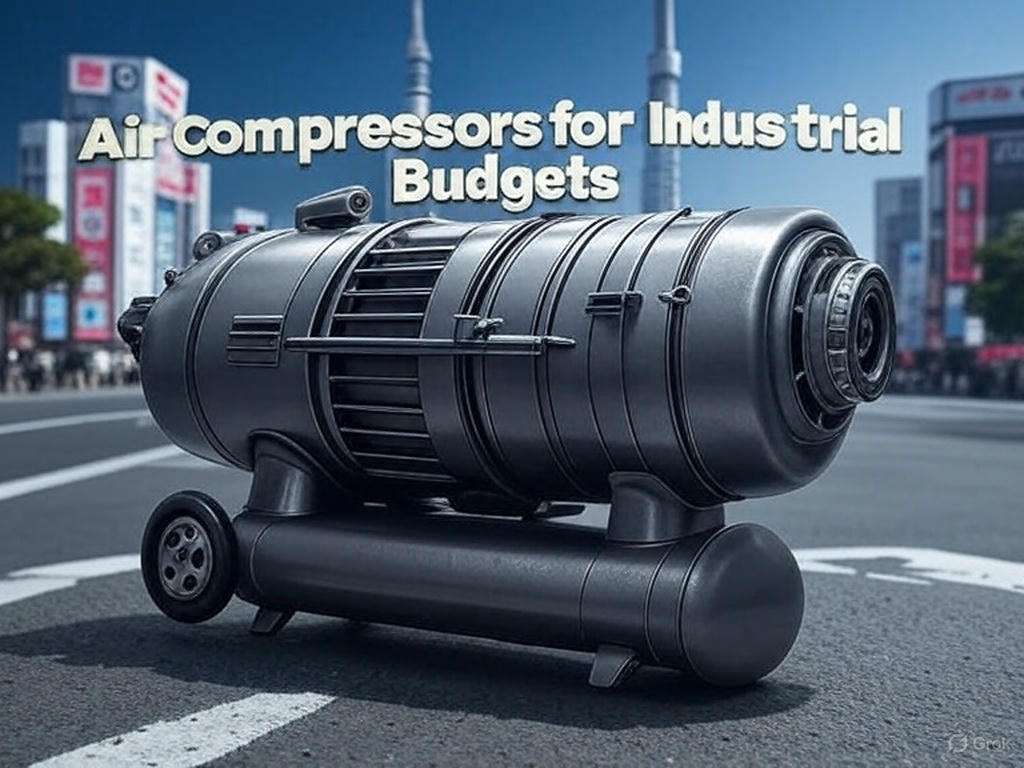
As a consequence, today's highly competitive industrial environment necessitates the requisite return on investment for every dollar spent on equipment. While air compressors are generally perceived as a mere utility, they occupy a strategic position in manufacturing, automotive, and several other high-end sectors of the economy. The optimal air compressor optimizes productivity, lowers energy costs, and minimizes downtime-all of which contribute directly to a better return on investment (ROI). For industries with budget restrictions, the identification of those air compressors that demonstrate the best value for money is fundamental. This blog shed lights on what makes air compressors high-ROI and how budget-conscious industries can make wiser choices that favor long-term profitability.
The term "high ROI" regarding air compressors should be defined before plunging into specific types or brands. It is more than just looking at the upfront purchase cost; it takes into account the total cost of ownership over the equipment's working life, maintenance and energy usage, repair, and downtime that it might endure. An air compressor which has a lower purchase price but extensive operation costs may not prove to be ROI in the long term; on the contrary, slightly more expensive with efficient functioning and longer life would become smarter investment.
Energy Efficiency Becomes Cost-Efficiency
ROI can be calculated by the rather simple formula: total returns or savings generated by the equipment divided by the total cost of ownership and multiplied by 100. High-ROI air compressors typically are the best in energy efficiency, reliability, low-maintenance needs, and long operation life. They are essential as they are not a luxury in industrial settings where air power is the core of day-to-day operations.
Energy costs are likely one of the biggest contributors to increased ROI. Air compressors are indeed notorious energy hogs, and energy costs often represent as much as 70 percent of total cost of ownership. Costly sufficient to really add up the savings over time, find a good energy-efficient model. An example of a VSD is the compressor, which changes its motor speed according to the demand for air, ensuring that during low-load situations, which are common for traditional fixed-speed compressors, energy is not wasted.
Most industries investing in the switch to VSD models reap impressive savings on energy bills, sometimes reaching 35%. These savings, compounded throughout the lifespan of the machine, make energy efficiency one of the clearest indicators of ROI. The use of energy-efficient equipment is most often additionally backed by incentive for many regions, which makes it much more succinct in terms of returns financially.
Industrial facilities will expand or move operations over time. A high-ROI compressor is flexible and scalable; it can be either integrated into larger systems or modified to meet changing demand. For instance, modular compressor systems allow factories to add or remove components on an as-needed basis without overhauling their entire system. This very flexibility reduces the risk of having to prematurely obsolesce the equipment, which will help in returning on the original investment.
Another advantage is their compatibility with smart factory systems. Compressors integrated with IoT and automation platforms provide real-time performance data useful for proactive management and long-term planning for efficiency. Visibility and control like these are vital to maximize ROI in the new industrial landscape.
A high-ROI compressor does not provide better ROI just on the basis of its design only. The reality is that the air compressor brand’s tech support and other services also contribute to the compressor’s ROI. Compressor manufacturers which offer first-class after-sales support, a long warranty period and easy accessibility of spare parts for repairs tend to provide a consistent ROI when compared to unknown brands. This is particularly crucial in industries operating in remote areas where obtaining timely technical support can be a major hassle.
Brands like Ingersoll Rand, Atlas Copco, Quincy, and Kaeser are trusted names because of their durability and innovation, combined with good global support networks. Although their products may have a higher initial cost, they present a much lower risk and overall cost in the long run due to guaranteed access to parts and service from qualified personnel.
In industries where quality of the compressor is a non-negotiable the initial price of one of these top-of-the-range air compressors can limit the buyer options if they lack the budge. However, several manufacturers and third-party suppliers have come to the rescue with financing and leasing options that allow for easy payment installments without compromising on quality. Such financial terms could greatly increase the ROI value, especially if a maintenance package or performance guarantee is included.
A leasing arrangement for a high-efficiency compressor would allow advanced technology to be enjoyed, with the costs not being borne immediately. This is especially useful for companies that are scaling operations or are looking to trial new production methods.
Purchasing an air compressor that actually raises industrial productivity and reduces operational costs will be expensive but if you are entering the industrial sector you need to have the best equipment for that edge over your competitors. As an industrialist your core emphasis should be energy efficiency and low maintenance and for that you need to choose an air compressor brand that gives adequate technical support. By thinking long-term you can ensure that your air compressor is an asset for your industrial operation.